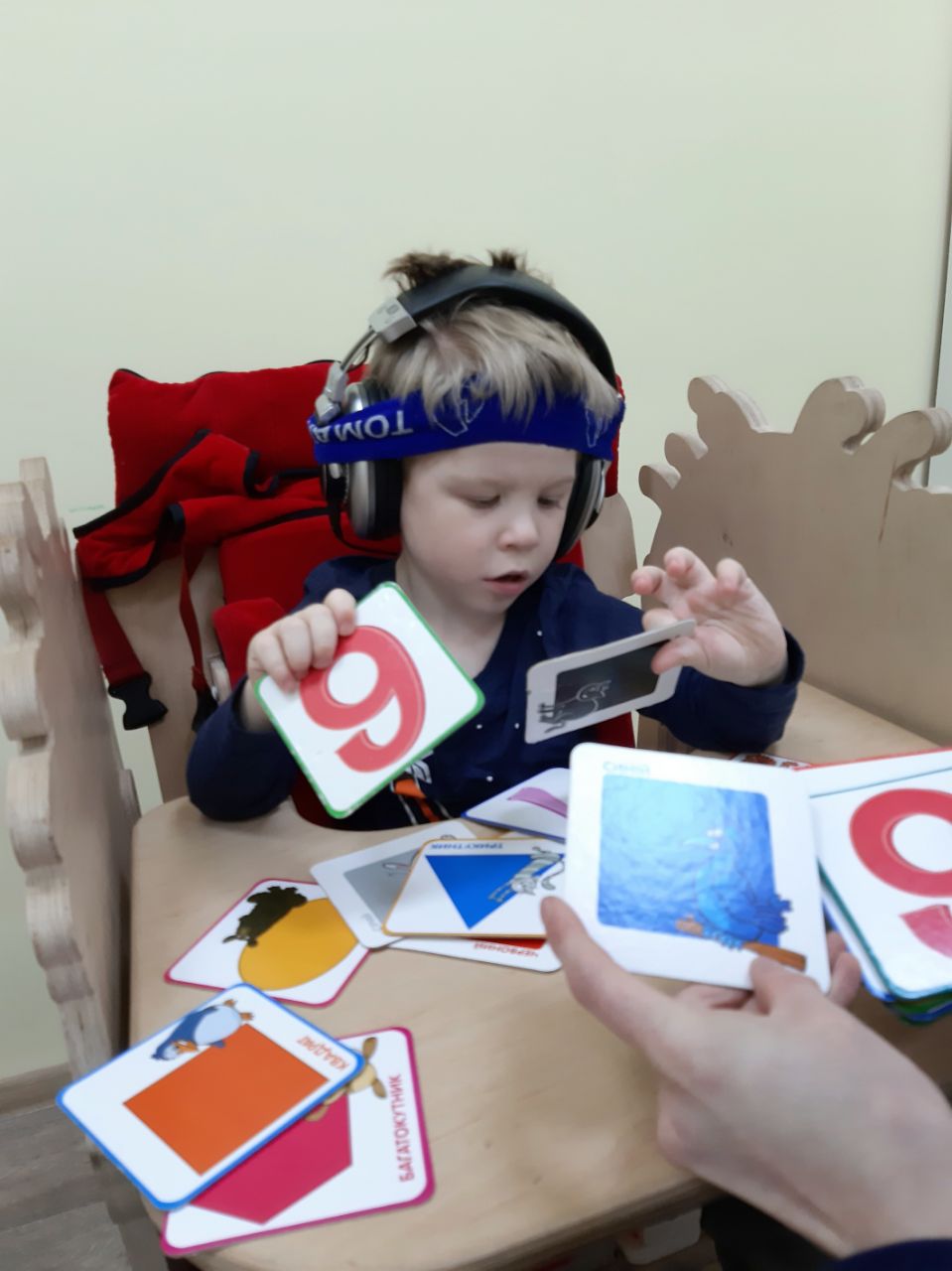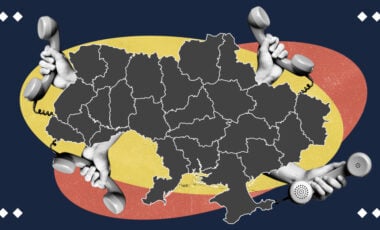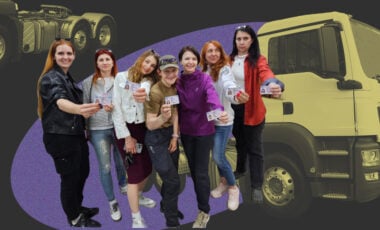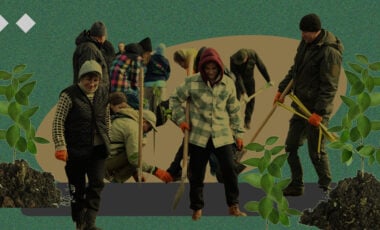Special kids: What are the newest rehabilitation methods in Ukraine?
June 1 is the International Children's Day. This year, Rubryka dedicate the piece to children with special needs and talk about new techniques used for rehabilitating and socializing such kids

The entire world strives to make society more tolerant. We believe that children with diagnoses such as autism, mental retardation, cerebral palsy, and Down's syndrome are full members of society and have the right to development, learning, and social life. Fortunately, the technologies and methods of working with such children have taken a step forward over the years. Now is the time when they are appearing in Ukraine.
Rehabilitation centers use the latest methods. One such center is the "Prometheus" Center for Neurocognitive and Physical Rehabilitation, which we will review today. Its creators, physiotherapist Dmytro Vynokur and psychologist Bohdan Mazur opened it 4 months ago.
"The idea to create the center rose a long time ago," Dmytro shares. "I've worked in this field over 10 years, Bohdan too. He is our psychologist and neurologist, and I'm a rehabilitation specialist. Two different fields. We decided to unite new and old techniques, go deeper, use the existing classic ones, but more advanced."
"They bring children with musculoskeletal disorders, speech, psycho-emotional and behavioral disorders here," Bohdan continues. "We combine physical rehabilitation with cognitive, so the child learns to walk, crawl, sit, hold its head, and also develop language and attention. Therefore, a physical therapist, psychologist, and speech therapist work in a group at rehabilitation. In addition, there are many instrumental techniques that help speed up development and get a child back on its feet faster. We aim to combine classic and instrumental techniques that can complement each other and enhance the effect."
How do classes with children look like in the rehabilitation center?
Dmytro explained to us that a rehabilitation center is a place where children stay temporarily. They don't live there but only come to classes during the rehabilitation course. The course itself lasts several weeks, and in each case, its duration depends on the diagnosis and condition of the child:
"We need to understand what the child needs now and choose the middle ground. Parents usually bring the child for 2-4 hours a day throughout the course. Gradually, the number of classes can increase. It depends on what emotional and physical activity will be ideal for the patient. Sometimes the loading increases dynamically. If the kid feels well after physical therapy, we can add another lesson with a speech therapist and a psychologist, scaling up the loading. Most often, children spend about 4 hours here."
"Most often, methods of working with children with developmental delays are based on teaching children to distinguish objects, listen and understand," Bohdan adds. "The problem is that the brain cannot do it because of the disease. In the Prometheus Center, we use methods aimed at building new neural connections. But no one departed from the classical therapy. Children work on exercise equipment, but it looks just like toys, because of the small size. We do massage for little kids. A psychologist and speech therapist work with them."
Instrumental techniques. Neurosensory stimulation
Dmytro and Bohdan told us that the distinctiveness of "Prometheus" is that they use special non-invasive instrumental techniques when working with children. These are technologies that can affect the brain and activate its parts. So, almost all procedures as physiotherapy, psychology, and classes with a speech therapist are performed using a special headset. It is also interesting that the technologies discussed below are used not only for rehabilitating children and adults with disabilities. They have existed since the 1980s, and now they are used in the medical industry, military equipment, and even in modern gadgets such as Google glass.
They use the Soundsory system for physical therapy with children who have a problem with the musculoskeletal system. These are wireless headphones that affect the motor center in the brain and stimulate it to work. The child wears special headphones that send sound in two ways: through the air and through bone conduction. The latter transmitted through vibration stimulates the motor center. The specialist makes specific movements with the child, and brain activity synchronizes with the movements. The brain receives a signal, and the limb performs a movement. It remembers the connection, and the kid learns to control the body, its condition, and do various manipulations.
They use the same method for disorders of sound perception when the child can not properly analyze auditory information. It doesn't notice the difference between the sounds of a passing car and a human voice.
The speech therapist also has special equipment for children. It's a special headset with bone conduction (Forbrain technology). Children may have impaired perception of certain sounds, and it is difficult for them to learn to speak because they don't understand the words they pronounce. Bone conduction headphones allow you to perceive sounds without distortion and hear your voice the way others hear it. So children can hear themselves from the side, understand what is wrong, and learn to pronounce words correctly.
"All these techniques allow you to teach a child to perceive the world, rather than "train" it to distinguish colors, shapes, and objects. Along with understanding the processes, comes interest. Children ask, learn everything around them," says Bohdan.
Space technologies for rehabilitation
They use real space technology to help children with cerebral palsy to get on their feet. And it's not an allegory. The devices adapted for children are real prototypes of those used in training astronauts. For example, an immersion bath. It 95% mimics the state of weightlessness. When rehabilitating children with cerebral palsy, the technology can reduce muscle tone in patients with spasticity. Decreased muscle tone leads to an increase in passive movements and regression of pathological postures. It greatly simplifies a comprehensive, targeted workout aimed at developing new "correct" mechanisms to support an upright posture and walking.
Another technology borrowed from astronauts is the Corvit simulator. It looks really cosmic and resembles shoes. The technology simulates the pressure on the relevant areas of the foot, as when walking. The patient is in a horizontal position. Corvit is used in rehabilitating patients after severe injuries and diseases of the musculoskeletal system and central nervous system.
Unusual simulators
We have already talked about children's exercise equipment, which differs from what we see on the playgrounds, in proportions. They're designed to develop muscles for cases where the child can already stand and move the limbs. For more complicated cases, other simulators are used. One of them is the Gross simulator. It's a special unloading suit held on rubber bands attached to the cable under the ceiling. The design "supports" the child, helps it learn to keep balance. With insufficient muscle function, the simulator creates simplified conditions for muscle work, and the exercise machine protects the patient from falling and injuries.
Another center's innovation is the horse. It's not an actual horse, but a hippo trainer. It's a technology that allows you to mimic the natural step of a horse accurately. The "rider" has to change the center of gravity constantly, return the body to its original position, keep balance, and try to stay in the saddle. Such movements contribute to proper tension and full relaxation of the abdominal muscles, thighs, back ultimately leading to their strengthening. Prometheus doesn't have the simulators yet. But they should arrive at the center by autumn.
Do parents receive help after the course?
"We believe we need to give this information to parents. We conduct consultations alternatively because again, rehabilitation in the center is great, but you also need to work with the child at home," Dmytro says. "Here children spend 5% of their time. After, we give parents the information on what to do and what program to use. Since, in most cases, parents attend classes with the child, they see what we are doing with it, can videotape, and ask questions. They're involved in the process and go with the child to a speech therapist, masseur, psychologist. Each specialist gives their tips and tricks. After a while, the children come back, and we continue to develop them to achieve results."
How to get help?
You can take a rehabilitation course at Prometheus. One course will cost the child's parents 10-15 thousand hryvnias. The exact amount depends on the procedures required by the child. Fortunately, one rehabilitation can be funded by the state under the "Money Follows People" program. Allocating money to treat children with special needs is regulated by law.
According to the changes made to the Resolution of the Cabinet of Ministers of March 27, 2019 №309, parents can apply to the Center for Social Protection, choose the center and sign a contract. They transfer the money to the account of the chosen rehabilitation institution, and the child can receive help. More detailed instructions are here.



























































